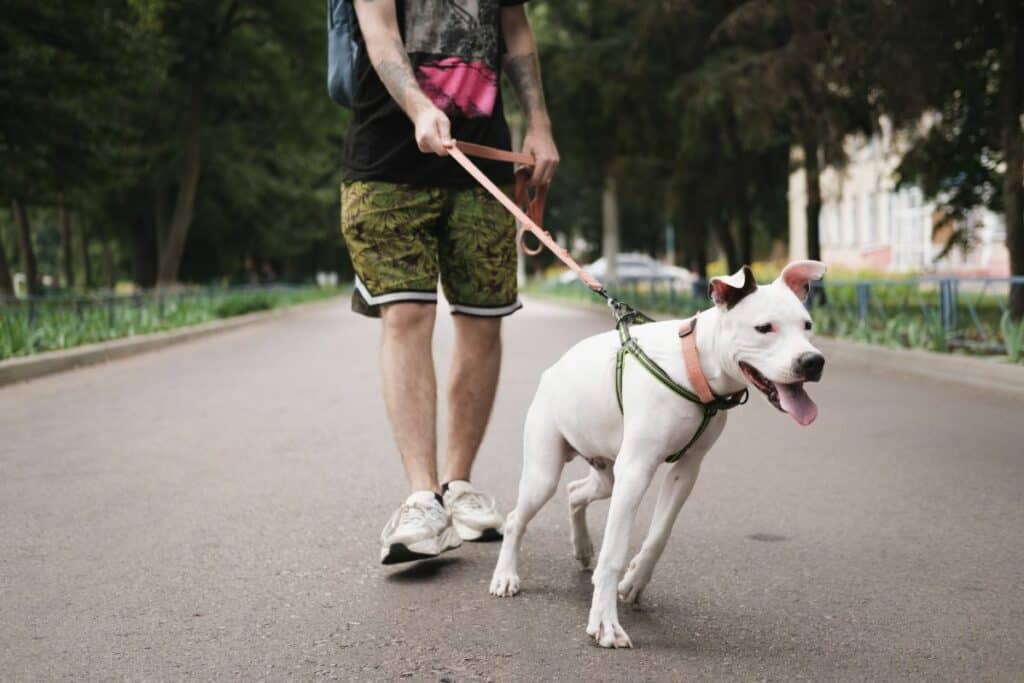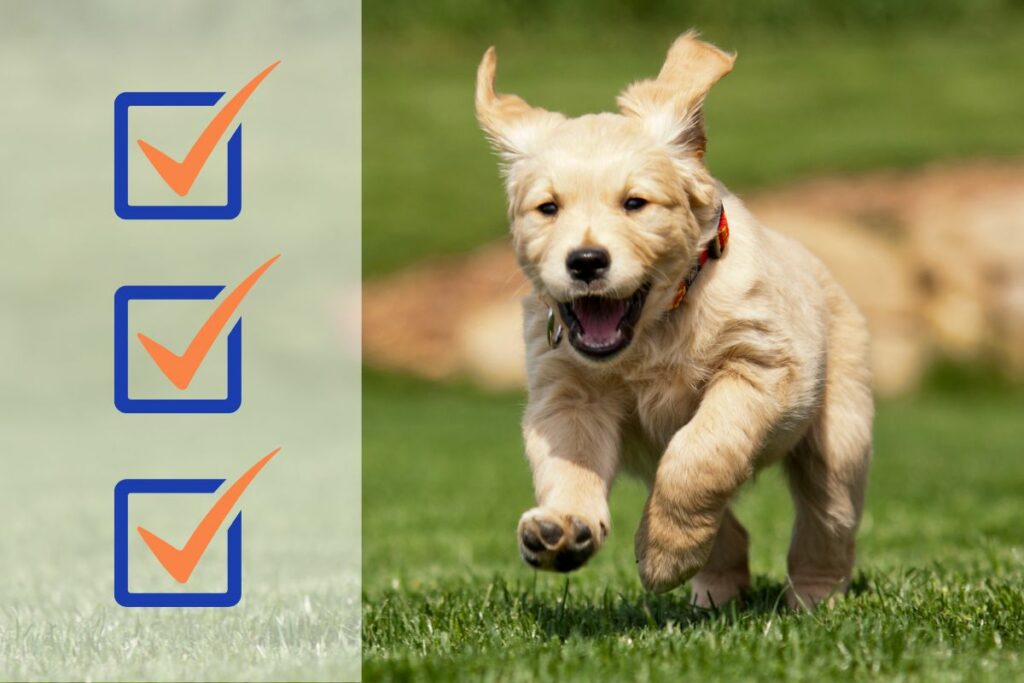Are you struggling with traditional dog training methods and looking for an effective, positive approach? Clicker training might be the solution you need. At The Academy of Pet Careers, we’ve successfully helped countless dogs and their owners achieve impressive results using this method. In this article, I'll guide you through seven easy steps to get started with clicker training, ensuring a fun and rewarding experience for both you and your dog.
Read the guide below or watch this detailed video to learn the fundamentals of clicker training and how to apply it in your own training.
Step 1: Understand What Clicker Training Is
Clicker training, also known as marker training, is a positive reinforcement method that uses a clicker to mark desired behaviors. The clicker is a small device that makes a distinct clicking sound when pressed. This sound serves as a marker, signaling to your dog that they’ve done something right and a reward is coming. The history of clicker training dates back to the 1940s when it was first used in marine mammal training. Today, it’s widely recognized for its effectiveness in dog training.
At The Academy of Pet Careers, we emphasize the benefits of clicker training: it’s clear, consistent, and allows precise timing. When I first started using a clicker with my dogs, I was amazed at how quickly they picked up new cues and behaviors.
Step 2: Learn How Clicker Training Works
The success of clicker training lies in its simplicity and scientific foundation. It operates on the principles of classical and operant conditioning. When you click to mark a behavior and follow it with a treat, you’re using classical conditioning. The click sound becomes associated with the reward, making it a powerful tool for learning.
Operant conditioning comes into play as your dog learns to associate specific behaviors with positive outcomes. The key here is timing and consistency. Each time your dog performs the desired action, you must click at the precise moment, followed by a treat. This teaches your dog that their behavior directly influences the outcome.
In our training sessions, we’ve seen how understanding these principles helps owners become more effective trainers. They can see the connection between their timing and their dog's responses, leading to faster progress.
Step 3: Use a Clicker for Dog Training
Selecting the right clicker is the first step. There are various types available, from basic models to ones with volume control. Choose one that’s comfortable for you to use and not too loud for your dog. Some dogs are sensitive to the sound, so a quieter clicker may be necessary.
Proper handling of the clicker is crucial. Hold it in one hand, ready to click, while keeping treats in the other. This setup allows you to reward your dog immediately after the click. Avoid clicking too late or too early, as this can confuse your dog.
PRO TIP: When I first began clicker training, I noticed my dog, Ruby, responded best to a softer clicker. Holding the clicker in one hand and treats in the other helped me maintain consistency and clarity during training sessions.
Step 4: Charge the Mark
Before you can effectively use the clicker, you need to charge the mark. This means teaching your dog that the click sound predicts a treat. Here’s a simple step-by-step process to charge the clicker:
- Gather a handful of treats and your clicker.
- Click the clicker and immediately give your dog a treat.
- Repeat this process 10-15 times in a short session.
- Conduct several short sessions over a few days.
- Watch for your dog’s response to the click. When they look excited or expectant after hearing the click, the clicker is charged.
Charging the mark is essential because it establishes the clicker as a powerful tool for communication. During my training sessions, I’ve seen dogs quickly learn to associate the click with rewards, making subsequent training much smoother.
Step 5: Clicker Train Your Dog to Sit
Now that your clicker is charged, it’s time to start training. Teaching your dog to sit is a great first step. Here’s how you can do it:
- Prepare for the session: Find a quiet, distraction-free area and gather high-value treats.
- Lure your dog: Hold a treat close to your dog’s nose.
- Move the treat: Slowly move your hand up, causing your dog to follow it with their nose and naturally lower their bottom to the ground.
- Click and treat: As soon as your dog’s bottom hits the ground, click and give them a treat.
- Repeat: Practice this several times until your dog sits consistently with the lure.
Once your dog is reliably sitting with the lure, you can add the verbal cue “sit” just before they perform the behavior. Eventually, you can phase out the treat lure, and your dog will respond to the verbal cue alone.
When I taught my dog, Nemo, to sit using a clicker, she caught on quickly. The clear marker signal helped her understand exactly what I wanted, and the positive reinforcement kept him motivated.
Step 6: Implement Advanced Clicker Training Techniques
With the basics down, you can move on to more advanced techniques. Use clicker training to teach other skills like “stay,” “come,” and “down.” The process is similar: mark the desired behavior with a click and follow with a treat. There are nuances to each skill, but not enough time to cover them in this article.
Clicker training is also effective for behavior modification. For instance, you can use it to address unwanted behaviors like jumping, barking, or reactivity. Click and reward your dog when they exhibit calm, desirable behaviors instead. Clicker training is used in one of our favorite behavior protocols, the Engage-Disengage Game. This game is beneficial for any dog that deals with reactivity and teaches them to stay calm by rewarding the more desirable behavior.
At The Academy of Pet Careers, we’ve used clicker training to transform dogs with various behavioral issues. The key is patience and consistency, reinforcing positive behaviors and gradually phasing out treats as the dog learns.
Step 7: Troubleshoot And Perfect with These Clicker Training Tips
To ensure success, keep these tips in mind:
- Short and fun sessions: Keep training sessions brief (5-10 minutes) to maintain your dog’s interest.
- Consistency: Use the clicker and rewards consistently to reinforce learning.
- High-value rewards: Use treats your dog loves to keep them motivated.
- Patience and positivity: Stay positive and patient, especially when your dog is learning a new behavior.
- Gradual difficulty: Slowly increase the difficulty of skills as your dog masters the basics.
When I first started using these tips with my own dogs, the difference was remarkable. The dogs were more engaged, and we saw faster results, making training an enjoyable experience for everyone.
Key Takeaways
Clicker training is a powerful and effective method to train your dog using positive reinforcement. By understanding the principles, properly using a clicker, and following a step-by-step approach, you can achieve impressive results. Remember to stay consistent, patient, and positive throughout the process.
At The Academy of Pet Careers, we’ve seen firsthand the transformative impact of clicker training on dogs and their owners. We encourage you to start your training journey today and enjoy the rewards of a well-trained, happy dog.

Joseph Schifano is the President of The Academy of Pet Careers and Founder of DogNerdly.
With over 20 years of professional pet experience, Joseph got his start as an owner/operator of a 7-figure, all-inclusive pet care business. From there, he purchased The Academy of Pet Careers with a hopes of improving the quality of care provided by industry professionals. This role allowed Joseph to rub shoulders with some of the biggest names in the industry, and gain knowledge in every aspect of pet care.
After witnessing the popularity of social media influencers and the amount of misinformation being taught to pet parents, Joseph decided to create DogNerdly. The goal was to provide science-backed education for the average dog nerd in order to create a world where dogs and humans can live a more harmonious and empowered lifestyle.







